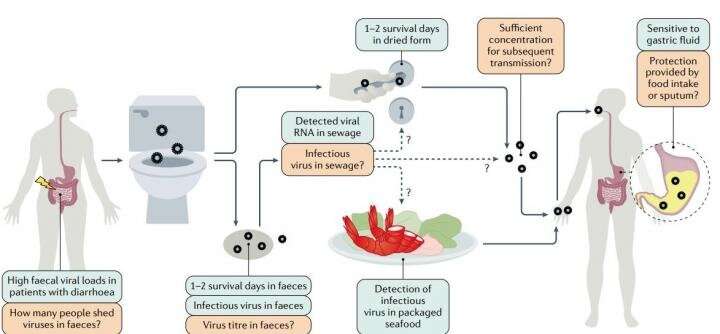
Recently, Prof. Zhu Shu from University of Science and Technology of China (USTC) of CAS and Prof. Richard A. Flavell from Yale University were invited to publish a review article in Nature Reviews Gastroenterology and Hepatology. They systematically summarized the gastrointestinal manifestations in patients with COVID-19 and explored the possible mechanisms of intestinal symptoms caused by COVID-19 infection.
Although the clinical manifestations of COVID-19 are primarily fever, cough, and pulmonary imaging, gastrointestinal symptoms have also been reported. About 50% of COVID-19 patients have shown detectable SARS-CoV-2 RNA in their fecal samples. Evidence of SARS-CoV-2 intestinal infection has also been reported based on multiple in vitro and in vivo animal studies.
Existing evidence of intestinal infection in COVID-19 were summarized. Intestinal expression of SARS-CoV-2 receptor and serine protease remain relatively high level. Virus particles and intestinal inflammation were detected at autopsy and biopsy of the patient’s intestines. In vitro intestinal cell lines and intestinal organs were identified as susceptible to SARS-CoV-2. The mouse, hamster, ferret, rhesus monkey and other animal models that can be used to investigate the intestinal infection of SARS-CoV-2 were also summarized and compared
The risk of potential fecal-oral transmission of SARS-CoV-2 was discussed. A rigorous and systematic determination of whether the virus titre in fecal fomites can exceed the minimum infection dose is essential to accurately quantify the true risk of SARS-CoV-2 transmission through a fecal-oral route.
This work deepened the understanding of COVID-19 gastrointestinal manifestations and suggest a potential relation between intestinal infections and disease severity. It is important for understanding the pathogenicity and transmission mechanism of the virus and developing scientific prevention and control strategies.
University of Science and Technology of China

